Great Design Plant: Cercis Occidentalis for Four Seasons
http://decor-ideas.org 05/18/2015 02:13 Decor Ideas
Western redbud (Cercis occidentalis) is truly a four-season plant. This western native is a plant to behold when its brilliant hot-pink to magenta flowers burst forth in the early spring, breaking our winter doldrums. Bright green, heart-shaped leaves follow soon after on this deciduous shrub or multitrunked small tree, and last through the summer before darkening with age. Three-inch, dark cinnamon-colored seedpods rustle in the fall breezes before stark gray bark and an attractive shape reveal themselves in winter.
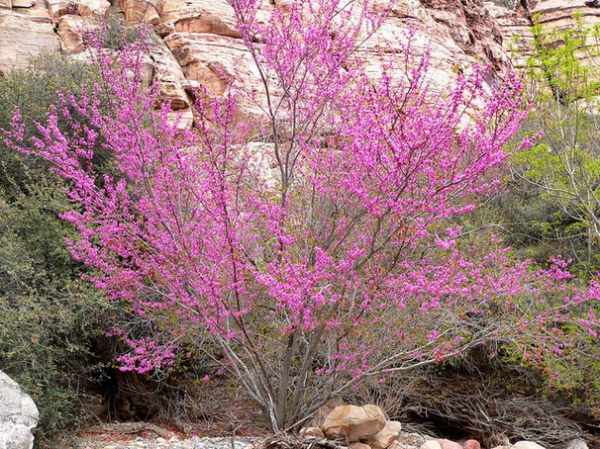
Photo by Stan Shebs
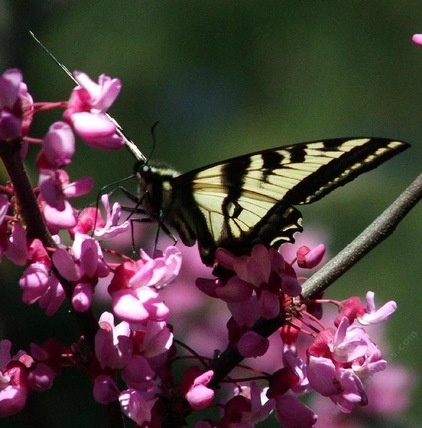
Botanical name: Cercis occidentalis (syn. Cercis orbiculata)
Common names: Western redbud, California redbud
Origin: Northern California, the Sierras, the San Joaquin Valley and the extreme southwest of California to Utah and Arizona
Natural habitat: Dry slopes, canyons and ravines next to a stream or spring; chaparral, Douglas fir forest, Joshua tree woodland, yellow pine forest and central oak woodland; needs warm summers; not for the immediate coast; below 4,500 feet
Where it will grow: Young plants are hardy to 20 degrees Fahrenheit; mature plants are hardy to 10 degrees Fahrenheit (USDA zones 5 to 9; find your zone)
Shown: A swallowtail butterfly on western redbud
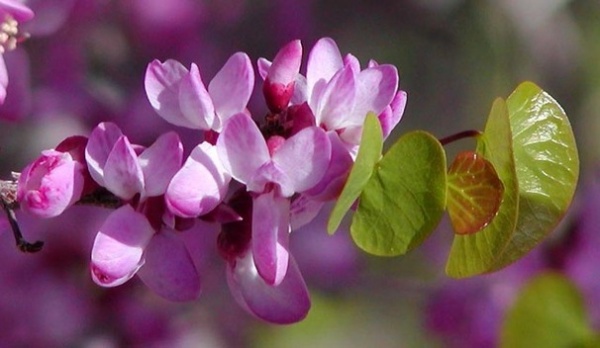
Photo of flowers with shiny young foliage by Stan Shebs
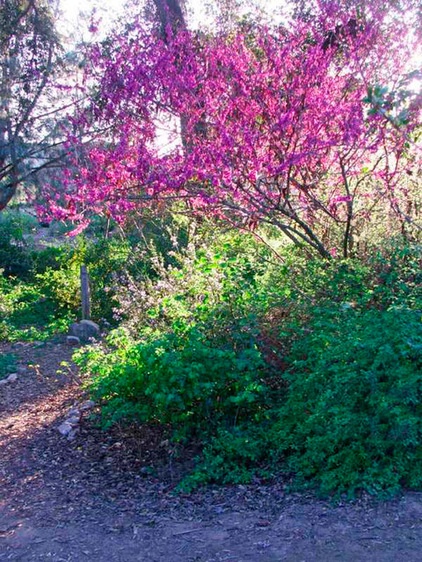
Water requirement: Moderate to dry; drought tolerant once established; grows more quickly if it receives occasional summer water; requires regular water in desert areas
Light requirement: Full sun to partial shade
Soil: Adaptable; best in well-drained soil
Mature size: 3 to 15 feet tall and wide
Benefits and tolerances: Tolerates clay, sand, alkaline and acidic soils; great under oaks due to its drought tolerance and resistance to oak root fungus; hummingbirds and pollinators enjoy the nectar; provides shelter and seeds for birds
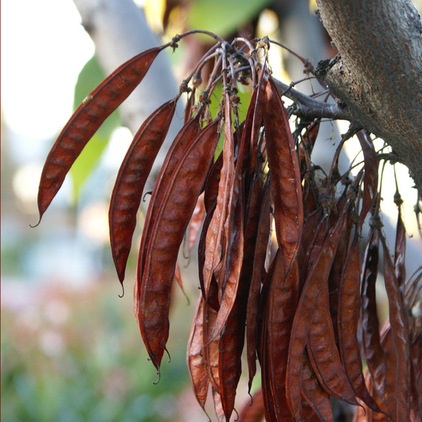
Seasonal interest: All four seasons
Spring: Showy magenta flowers from February to April, followed by bright green, heart-shaped leaves; seedpods from the previous year can be persistent, adding textureSummer: Lush green foliageFall: Dark cinnamon-colored seedpods (shown here) at least 3 inches long; the leaves change to yellow, orange or red at higher, colder elevationsWinter: Graceful vase-like shape with seedpods and no leavesWhen to plant: Late fall is ideal; winter works well; spring is acceptable; summer can be challenging to all but the most experienced gardener
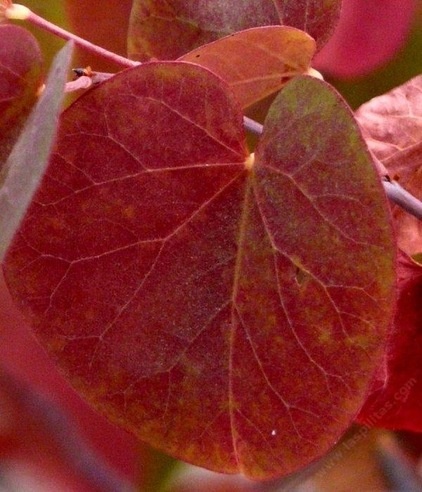
Shown: Western redbud with fall color
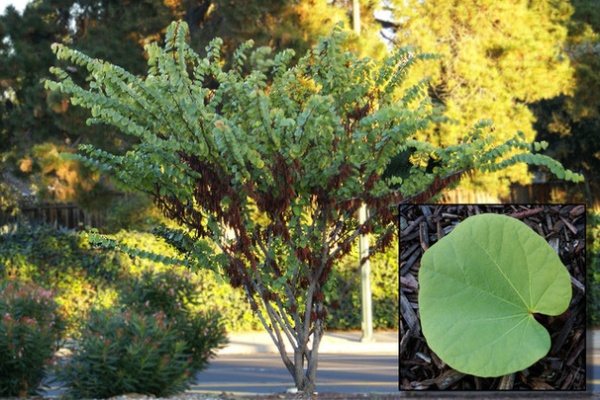
Distinguishing traits. With an appealing vase-like to rounded shape, intense pink to magenta flowers, textural deep brown seedpods and lovely gray branches, western redbud makes a striking four-season specimen plant.
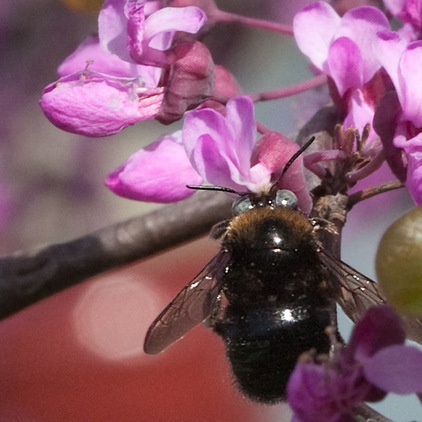
Wildlife value. Western redbud is a great addition to a habitat garden, attracting birds with its nutritious legume seeds and hummingbirds, beneficial insects, native bees, honeybees and other pollinators with its early-spring nectar.
Leafcutter bees leave semicircular cuts on edges of western redbud’s new, tender leaves, which they use to soften their nests for their young. Leafcutter bees are one of 1,600 native bee species in California; they are gentle and won’t pester you at your barbecue picnic like pesky yellow jacket wasps.
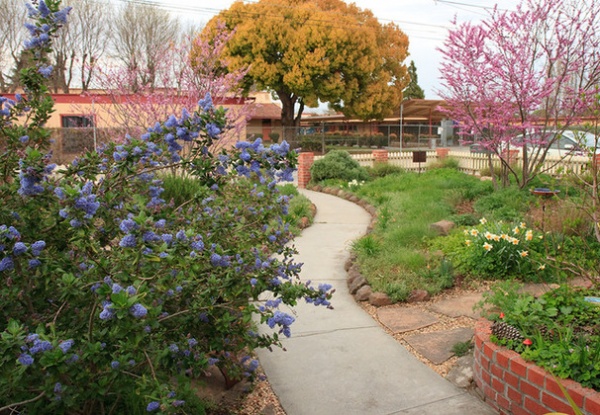
How to use it. Use western redbud as a specimen, as a screen or in a habitat garden. If drought-tolerant western redbud has good drainage where it is sited, this ornamental will make a proud statement in any garden, including parks and even as a street tree.
The flowering western redbud, shown on the right with California native ceanothus (Ceanothus sp) in the foreground, makes a beautiful specimen plant in this mostly native landscape.
See how to grow more California native plants
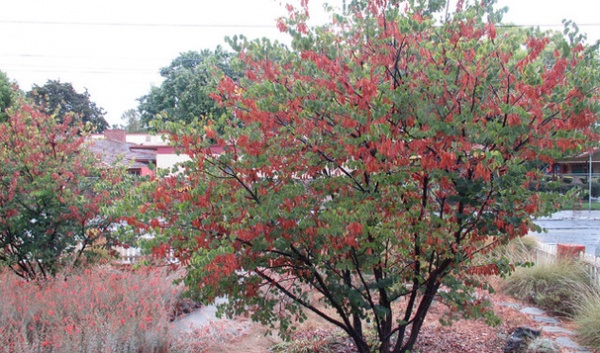
Planting notes. Prune annually in the fall for size and to remove dead or crossed branches. Western redbud can be coppiced (cut back) to the ground once it’s established if it needs rejuvenation. Although coppicing will kill most plants, others, like western redbud, look even better after two to three years. Consider this extreme measure only if the plant is far too large, misshapen or so old that it blooms only at the top third of the plant.
More:
7 Spectacular and Practical Spring-Flowering Trees
Browse plants native to other regions of the U.S.
Related Articles Recommended












